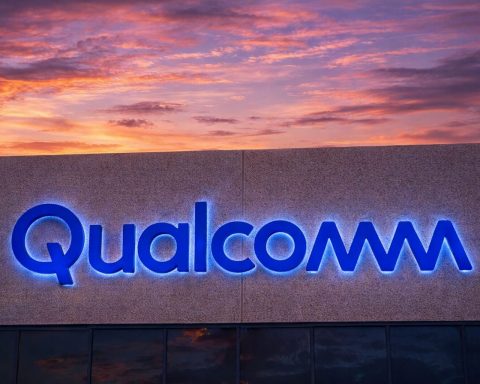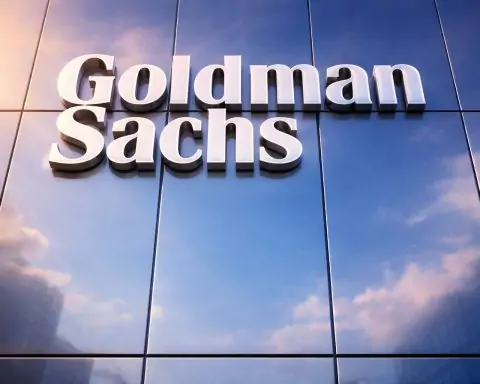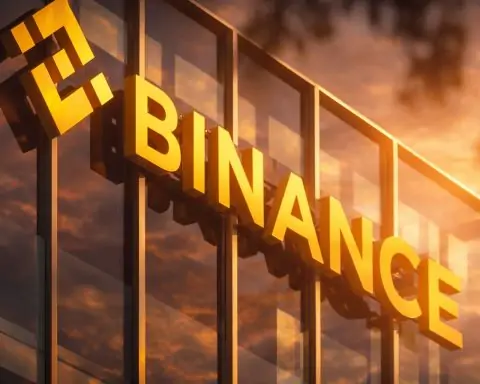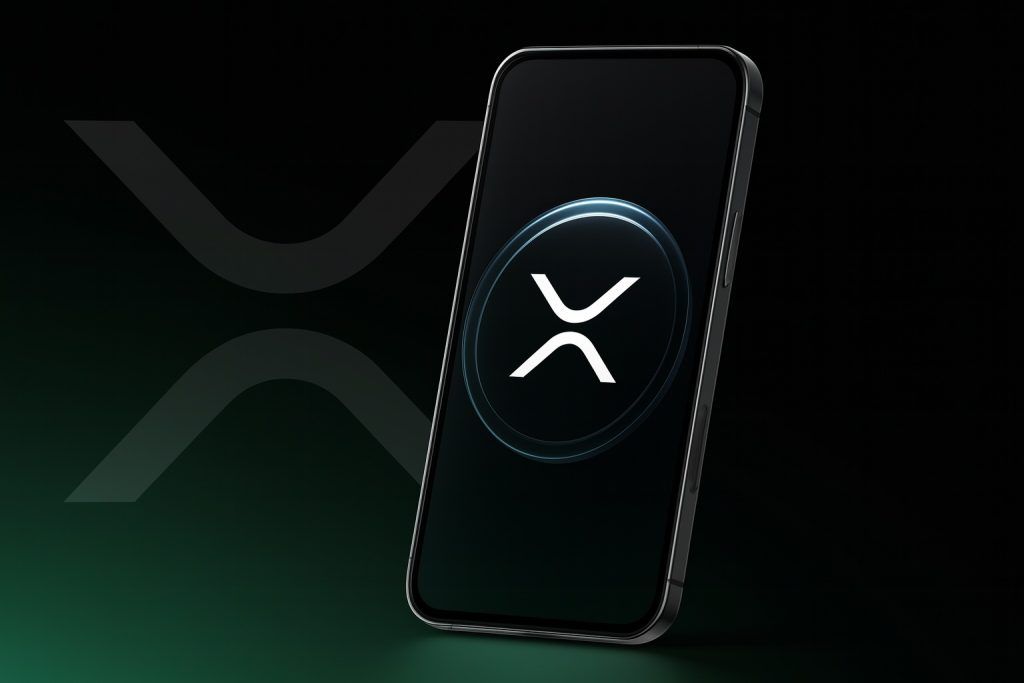Key Facts – October 20, 2025
- SOL Price Today: ~$190 USD (as of Oct. 20), roughly 0.0018 BTC or 0.05 ETH [1]. Solana’s market capitalization is about $100 billion (top six crypto, ~25% the size of Ethereum’s market cap) [2].
- Recent Performance: SOL is up ~4–5% over the past week, rebounding into the high-$180s after dipping to the $170s last week [3]. The price remains ~17% below its early-October peak near $250 [4], but is still nearly 4× higher than a year ago (it traded around $50 last fall) [5].
- Uptober Rally & Pullback: An “Uptober” rally saw Solana spike above $250 in early October – its highest level since January – fueled by spot ETF hype and big institutional buys [6] [7]. Once that hype cooled, profit-taking, regulatory delays, and macro jitters (e.g. a surprise U.S. tariff threat) triggered a 17–25% plunge into the $180s [8] [9].
- Key Support & Resistance: Analysts pinpoint $170–$180 as a crucial support zone for SOL (near the 200-day moving average) [10]. Holding above this range could spark a rebound toward $200–$210 (major resistance where the 50- and 100-day averages cluster) [11]. A break past ~$210 might open the door to $225–$230+ and beyond [12], whereas failure to hold $170 support risks a deeper retracement (next supports around $168, $143) [13].
- Upcoming Catalyst: The Solana Foundation has teased a big announcement for Oct. 20, posting a video of glowing payment cards that hints at a possible Solana-branded debit/credit card reveal [14]. The community is buzzing that this development – expected today – could bolster Solana’s role in blockchain payments if confirmed.
- Bull vs. Bear Outlook:Experts are split on SOL’s next move. Bulls argue Solana could revisit $300+ if key catalysts (like a U.S. spot ETF approval) materialize – with some even eyeing ~$312 in the coming weeks or $500 in 2026 under ultra-bullish scenarios [15]. Bears urge caution, noting Solana’s volatility – one chartist warned that if SOL loses major support, it could collapse toward $40 in a worst-case meltdown [16]. Most analysts, however, remain cautiously optimistic, seeing strong fundamentals but advising vigilance amid crypto’s swings.
Solana Price Overview
Solana’s price is hovering around $190 as of October 20, 2025, after a turbulent first half of the month. At press time over the weekend, SOL traded near $189.9 – up about 2.6% on the day and ~4.6% on the week [17]. This gives Solana a market cap north of $100 billion, cementing its status as a top-six cryptocurrency and roughly one-quarter the size of Ethereum by capitalization [18]. The recent uptick to the high-$180s reflects a modest recovery from the mid-month lows, when SOL briefly dipped into the $170–$175 range amid a broader market pullback.
October’s volatility has been extreme. In early “Uptober,” Solana surged from the low-$200s to over $250, marking its strongest price since January and continuing a massive uptrend from 2024’s lows [19]. That rally – driven by positive crypto sentiment and anticipation of Solana exchange-traded funds (ETFs) – abruptly hit a ceiling near SOL’s all-time high (~$253). By mid-October, momentum reversed and SOL gave up about 17%, sliding under $220 and even below $200 in a matter of days [20]. Profit-taking by traders, combined with external shocks, turned what had been a 25% “Uptober” surge into a sharp correction. As of Oct. 17, Solana was trading in the high-$180s – roughly 17% down from its early-month peak [21]. Even so, zooming out, Solana remains one of the best-performing large-cap coins of 2025: it’s still nearly 4× higher than its price one year ago, which was around $50 [22].
Notably, Solana’s mid-October slump wasn’t an isolated event. The entire crypto market saw a cooldown after the early-month rally. Bitcoin, for instance, pulled back from new highs above $110K to around $106,000, and Ethereum retreated to roughly $3,855, as investors took profits across the board [23]. This context underscores that SOL’s decline into the $180s was part of a broader market “breather”, not a Solana-specific collapse. “The retreat is part of a wider market breather after a furious rally,” one analysis noted, with Bitcoin down ~5–10% on the week as of mid-month [24]. In other words, Solana’s price turbulence in October mirrored a general risk-off turn in crypto – though SOL’s swings were among the most pronounced, given its outsized run-up prior to the pullback.
By the start of this week, Solana showed signs of stabilization. It found support above the mid-$180s and has been consolidating in a range. Over the past several days, traders have repeatedly bought dips toward ~$182–$185, indicating strong demand in that area [25]. Market observers describe SOL as entering a key accumulation phase between roughly $175 and $200 [26]. Each time Solana wicks down to the high-$170s, buyers step in, confirming this zone as an important support base where investors see value. Consequently, SOL has managed to hold its 200-day moving average (around $175) and grind back upward, a sign of resilience. As of Monday morning, Solana is trading just under the psychological $200 level – a point that bulls hope to reclaim in the very near term.
Technical Analysis and Price Forecasts
From a technical standpoint, Solana’s chart is at a crossroads. The recent pullback, while steep, brought SOL back to a critical support band in the $170s that technicians have been watching closely. This $170–$180 zone aligns with long-term trend metrics – for example, Solana’s 200-day simple moving average lies around ~$174–$175 [27] – and also corresponds to prior resistance levels from earlier in 2025. Holding this support is seen as make-or-break: if Solana stays above ~$170, many analysts believe the bullish uptrend can continue [28]. Indeed, SOL’s price is currently bouncing along a key trendline, with some chartists noting it’s hugging the lower boundary of a two-month “falling wedge” pattern – a typically bullish formation if support holds [29]. “Solana is retesting a double support on the daily chart,” one trader observed, suggesting this could “set the stage for a 15–20% bounce” as long as buyers defend the range around the 200-day MA [30]. In practical terms, so long as SOL remains above roughly $170, the door stays open for a recovery toward the $200+ zone on any renewed momentum.
Immediate technical levels: On the upside, $200–$210 has emerged as the first major resistance barrier. This area is congested with moving-average targets and recent swing highs; Solana attempted to reclaim $210 mid-month but faltered, underscoring the sell pressure in that zone [31]. Analysts note that a decisive break above ~$210 (which is near the 50-day MA around $215) would signal that bulls have regained control. Such a breakout could trigger a rapid rally into the next resistance band around $225–$230 [32], with some even eyeing the $270–$280 range if momentum really picks up [33]. A CoinPaper markets report highlighted that a move above $200 might “trigger a rally toward the $270–$280 range,” given the prior consolidation levels from Solana’s spring highs [34]. Beyond that, Solana’s early-October peak near $250 and its all-time high around $253 stand as psychological and technical ceilings – but a break past $253 would be uncharted territory, potentially confirming a long-term bullish breakout if it ever occurs.
On the downside, however, traders remain wary of a potential break of support. In the near term, Solana has been holding above ~$183 (its recent intraday lows) during this recovery [35]. If SOL were to decisively slide below the low-$180s – say, a daily close under $180 – it could accelerate selling. One scenario is a drop toward the next strong support around $168–$172, which corresponds to the lower bound of current trading bands (and the lower Bollinger Band) [36]. Chart analysts have flagged ~$168 as an area where buyers might step in again, as it’s a Fibonacci retracement level and near the summer 2025 lows [37]. But if that fails, the $150s come into view. Prominent crypto trader Crypto Tony cautioned that despite SOL’s constructive long-term trend, a short-term correction could still occur – predicting that SOL “might dip toward $155–$160” in the coming weeks after struggling to break $192 resistance [38]. This kind of pullback, while not catastrophic, would retrace more of Solana’s Q3 gains and test the conviction of bulls.
Worst-case fears even envision deeper lows: One well-known chartist warned that if Solana’s much-awaited rally doesn’t resume, the token could enter a larger corrective phase. Citing Elliott Wave patterns, he suggested Solana “may have already topped out” in a cycle, and in a bearish scenario could crash up to 70% from current levels – potentially plunging into the $40–$50 range if key supports break and seller momentum snowballs [39]. To be clear, this is an extreme outlier view, but it highlights the volatility that still lurks in crypto markets. Few analysts see that kind of collapse as likely given Solana’s fundamentals, yet it’s a reminder that nothing is guaranteed in crypto.
On the bullish side, many forecasters are targeting a return to $250+ if conditions improve – and even higher if new catalysts emerge. A number of crypto analysts maintain that Solana’s October pullback was a healthy correction and expect a resumption of the uptrend. Should SOL regain the $210–$220 zone, it would form a higher low and possibly build momentum for another leg upward. Some optimistic projections even see Solana pushing toward $300 in the coming months. In early October, speculation around a spot Solana ETF led some chartists to predict ~$312 for SOL by late October if an approval came through [40]. While the U.S. SEC has delayed any decision on those Solana ETF applications (more on that below), the possibility of an ETF launch early next year keeps bulls enthusiastic. JPMorgan analysts estimated that a spot SOL ETF could bring in about $1.5 billion of new demand, which would be a major tailwind for price [41] [42]. Ultra-bullish scenarios even contemplate Solana hitting $500 in the next year or two if the project’s growth continues on its current trajectory [43] – a figure that sounded like fantasy when SOL was $50, but now not entirely impossible should significant institutional capital flow into the ecosystem.
Bottom line: Solana’s short-term trading range appears to be roughly $170 support to $210 resistance. A break in either direction could set the next trend. Traders are watching $170 as the must-hold floor for bulls; as one analyst summed up, “As long as SOL stays above ~$170, the bullish scenario could continue”, with a quick revisit to $200+ likely on any good news [44]. Conversely, a drop below the mid-$170s would darken the charts and might invite additional downside to the $150s or lower. For now, the bias among many analysts is cautiously bullish – they note that Solana’s pullback has been orderly, the asset is consolidating above its long-term averages, and broader market sentiment is slowly improving. But given the still-recent memory of Solana trading under $20 during the depths of the 2022–2023 bear market, there’s an undercurrent of caution. Volatility works both ways, and Solana will need to prove its strength by holding support and eventually breaking through the overhead supply around $210 to truly rekindle its rally.
Recent Developments in the Solana Ecosystem
Beyond price fluctuations, October has been an eventful month for Solana’s ecosystem – with significant news and developments that could influence SOL’s outlook. Perhaps the most immediate catalyst is the Solana Foundation’s teaser of a major announcement slated for October 20. Late last week, Solana’s official account on X (formerly Twitter) posted a mysterious video featuring stacked, glowing cards accompanied by a payment chime sound [45]. The clip ends with today’s date, “Oct 20, 2025,” on screen. This has fueled intense speculation that Solana might unveil a Solana-branded payment card or fintech integration, potentially a debit or credit card linked to Solana wallets. Such a product could further bridge Solana’s blockchain with everyday payments, expanding its real-world use cases. Observers note that if a Solana card or payments platform is announced, it could “redefine Solana’s role in blockchain-based payments” and bolster the network’s positioning in the fintech space [46]. The mere anticipation of this reveal has been cited as one factor helping SOL hold near $190, as some traders are positioning ahead of what they hope will be bullish news.
Meanwhile, institutional and DeFi developments have underscored confidence in Solana’s long-term trajectory. In a notable vote of confidence, Circle – the issuer of the USDC stablecoin – just minted $250 million worth of USDC on Solana [47]. This massive mint, one of the largest single USDC issuances in recent memory, was observed via blockchain data and reflects renewed demand for stablecoin liquidity on Solana. By injecting a quarter-billion dollars of fresh USDC onto Solana, Circle aims to strengthen liquidity across Solana’s decentralized exchanges (DEXs), lending platforms, and payment protocols. The move positions Solana as a key hub for stablecoin activity once again, directly competing with Ethereum and Coinbase’s Base network in the stablecoin arena [48]. In fact, with this issuance, the total USDC circulating on Solana now exceeds $1.4 billion, making Solana the third-largest platform for USDC after Ethereum and Base [49]. For context, Solana’s USDC supply had dwindled after the 2022 FTX saga, but this resurgence suggests growing confidence in Solana’s DeFi ecosystem. Analysts note that Solana’s ultra-low fees and high throughput make it ideal for stablecoin usage – average transaction costs on Solana are under $0.002 with sub-second finality, far more efficient than Ethereum’s base layer [50]. Circle’s big mint thus not only boosts DeFi liquidity in the short term, but also signals that Solana is re-emerging as a stablecoin powerhouse, capable of handling large-scale value transfer at speed.
There are other promising signs in Solana’s DeFi and NFT sectors. After a rocky period last year (including network outages and liquidity exiting), activity on Solana is picking back up. Industry reports highlight that October has been especially strong for Solana’s ecosystem, with a wave of new DeFi protocols deploying on the network and even some NFT platforms returning after earlier technical hiccups [51]. Developers have praised Solana’s recent network upgrades for significantly reducing congestion and improving consistency [52]. The chain’s throughput and reliability improvements are now drawing attention from enterprise players experimenting with tokenized assets and high-frequency trading applications [53]. For example, Solana’s architecture – which prioritizes speed and parallel processing – has allowed it to handle surging trading volumes “with ease” during periods of market stress, whereas some rival chains struggled under pressure [54]. During a flash-crash event on Oct. 11, Solana processed a flood of transactions without issue, while even Ethereum showed signs of strain [55]. This robust performance has given developers and users greater confidence that Solana’s infrastructure can scale for real-world demands (from DeFi trading to NFT minting and gaming) without breaking. It’s no wonder that creators and projects are coming back to Solana; the network effect of its fast-growing user base and liquidity is enticing after a period of caution. In the NFT realm, Solana remains a top-tier player (Solana’s NFT sales volume ranks second only to Ethereum historically), and renewed stability is encouraging NFT marketplaces and artists to re-engage with the platform.
Importantly, big-money investors are doubling down on Solana. In recent weeks, several major institutional moves made headlines. Venture capital giant Andreessen Horowitz (a16z) led a $50 million investment into the Jito Foundation, a startup focused on Solana staking technology [56]. This investment aims to further improve Solana’s infrastructure and performance at the validator level. Around the same time, Nasdaq-listed Forward Industries made waves by raising a whopping $1.65 billion for a new strategy: the company pivoted to become essentially a “Solana holding company,” using the funds to purchase about 6.8 million SOL tokens (over 1% of Solana’s total supply) for its treasury [57]. This unprecedented move by a public company effectively placed a big bet on Solana’s future value, echoing MicroStrategy’s bitcoin strategy but in the Solana realm. Such moves demonstrate growing institutional conviction that Solana will be a long-term winner in the crypto economy. “Big players continue to express confidence in Solana’s long-term value,” as one market analysis put it, pointing to the a16z and Forward deals as evidence [58]. Even Circle’s actions can be seen in this light – USDC’s renewed presence on Solana suggests institutional desks and market makers are actively preparing to use Solana’s rails, likely anticipating more trading and DeFi activity ahead [59].
On the regulatory front, one of the key narratives has been the push for Solana-based ETFs and associated U.S. regulatory decisions. In mid-October, the U.S. Securities and Exchange Commission delayed its decisions on several proposed Solana investment funds. October 16 was the expected decision date for spot Solana ETF filings from major asset managers like Bitwise and 21Shares, but the SEC punted the deadline, citing the need for “additional time to evaluate issues related to market integrity and investor protection.” [60]. This delay was somewhat anticipated (given the SEC’s cautious stance on crypto ETFs), but it did introduce near-term uncertainty for Solana. Traders who had “bought the rumor” of an imminent ETF approval began “selling the news” of the delay, contributing to SOL’s mid-month price dip [61]. However, despite this setback, Solana’s price proved resilient: it found support around ~$183 in the aftermath and even rebounded ~4.5% in the days following the ETF postponement [62]. By October 20, SOL was back above $190, suggesting that the market had largely priced in the delayed timeline. Many observers now expect any U.S. Solana ETF approval to be pushed to 2024, but importantly none of the applications were rejected outright – they’re still in play, keeping alive the possibility that Solana will eventually have a regulated investment vehicle that could channel significant institutional money into the asset.
Outside the U.S., Solana’s global adoption also continues apace. For instance, Solana is making inroads in Asia’s crypto markets: the Solana Foundation recently partnered with fintech firm Wavebridge to launch a Korean won (KRW)-backed stablecoin on Solana [63]. Such developments show Solana’s expanding international footprint and its appeal for new financial products (in this case, tapping into demand for stablecoins in South Korea). Additionally, fresh data from 2025 indicates Solana has become a dominant player in decentralized trading. According to Blockchain.News, Solana’s decentralized exchanges captured about 50% of all crypto DEX trading volume in 2025 – an eye-opening statistic that underscores the platform’s retail adoption momentum [64]. If accurate, this means Solana’s DeFi ecosystem (led by popular DEXs like Jupiter and Orca) has grabbed as much combined market share as Ethereum’s DeFi in terms of trading volumes this year. Such traction speaks to Solana’s ability to deliver a smooth trading experience (low fees, fast execution) that attracts volume from retail and arbitrage traders alike. These fundamental strengths and growth signals in Solana’s ecosystem provide an underlying support to the SOL price, even when regulatory or macro news causes short-term wobbles.
Expert Commentary and Outlook
The rapid rise of Solana in 2025 has drawn both enthusiastic endorsements and cautious critiques from industry experts. On one side, prominent investors and analysts are singing Solana’s praises – often pointing to its technological prowess and recent performance as justification for bullish outlooks. Matt Hougan, CIO of Bitwise Asset Management, recently lauded Solana’s “speed, throughput and near-instant finality,” calling the network “extraordinarily attractive”. He even went so far as to dub Solana “the new Wall Street” of tokenized finance, suggesting that Solana’s high-performance blockchain could become the de facto platform for the next generation of financial markets [65]. Similarly, Mike Novogratz (CEO of Galaxy Digital) has been touting this season as the “season of SOL.” Novogratz noted a notable shift in sentiment and capital toward Solana and expressed optimism that a U.S. spot Solana ETF will eventually launch, which could further validate the asset in the eyes of traditional investors [66]. This kind of high-profile confidence has helped solidify Solana’s reputation as more than just a fringe “altcoin” – it’s increasingly viewed as a mainstay of the crypto landscape.
Traders known for their market savvy are also weighing in. The pseudonymous analyst Altcoin Sherpa, for instance, commented that Solana and a handful of other protocols have been “stronger bets” than Ethereum in recent months [67]. His view is that new money entering crypto has been chasing high-performance layer-1 chains, and Solana’s combination of speed and relatively lower valuation (versus Ethereum) makes it an attractive target. We’ve seen evidence of this in capital flows: several weeks this year, Solana investment products saw greater inflows than those of any other altcoin, and on-chain data showed large SOL accumulations by big players [68] [69]. Jeff Dorman, CIO of Arca, has been outright bullish – calling SOL “the most obvious long right now” among major cryptos. Dorman drew parallels to Ethereum’s run-up earlier in 2025: ETH nearly tripled in price on roughly $20 billion of new institutional demand, so in his view “what do you think happens to SOL” if even a few billion dollars flow into it, given Solana’s smaller market cap [70]? Dorman suggests that if $2–3B of expected ETF and institutional money comes into Solana, it could “repeat the exact same playbook” that drove Ethereum to record highs [71]. Consistent with this, some price models and analysts are setting aggressive targets – $300+ in the relatively short term if a spot ETF is approved and broader crypto momentum continues [72]. Longer-term, price calls of $500 or more for SOL (once dismissed as moonboy talk) are now being floated as plausible scenarios for the next 1–2 years [73], especially if Solana’s ecosystem growth continues unabated.
On the other side of the debate, skeptics and cautious voices remain. The recent pullback has emboldened some bears to reiterate warnings that Solana’s rallies can be fickle. One prominent crypto chartist (known by the handle “Crypto Bullet”) argued that the much-anticipated Solana bull season might “not happen” in full force if certain bearish technical patterns unfold [74]. He pointed to a possible Elliott Wave count in which Solana may have completed a five-wave uptrend at its January 2025 highs (when SOL briefly hit ~$293 amid a meme coin frenzy). In this interpretation, Solana’s early-October rally could have been a B-wave bounce, with a final C-wave down still to come. This analyst cautions that under such a scenario, SOL could lose another 70%+ of its value, potentially revisiting the $40–$50 price zone before finding a true long-term bottom [75]. While few others are that bearish, even moderate analysts agree that downside risks exist. For instance, technical trader Ted Pillows noted that the major institutional buyers (like those “Solana treasury” firms) that helped drive SOL up have paused their accumulation; without new large buyers stepping in, “any price recovery will be difficult in the short term,” he warned [76]. There’s also the broader macro backdrop to consider: crypto remains sensitive to global events (witness the U.S. tariff scare that knocked SOL from $222 to $184 in one day [77]), as well as to the whims of monetary policy and equity markets. Should risk appetite wane globally, high-beta assets like Solana could see outsized declines.
Many experts, however, strike a middle-ground tone: bullish on Solana’s fundamentals and long-term prospects, but cognizant of short-term volatility. A recurring theme is that Solana’s core value proposition is strong regardless of day-to-day price moves. “Solana’s high throughput and efficiency really shone when the market got wild,” observed Alex Carchidi, a contributor at the Motley Fool, referring to Solana’s smooth performance during recent volatility [78]. This technical robustness – along with Solana’s growing developer community and user adoption – gives a foundation for optimism. Even after the pullback, “Solana’s overall market structure remains constructive,” noted one crypto commentator, who pointed out that buyers have been gradually stepping back in despite the turbulence [79]. The sentiment among many long-term holders is that Solana is here to stay as a top blockchain, and that transient market rotations (“Uptober” rallies and corrections) don’t change the project’s upward trajectory. But at the same time, prudence is advised; as one prediction market implied, there was only ~41% odds of Solana hitting a new all-time high this year despite the fervor [80] – meaning the crowd isn’t fully convinced of immediate moonshots. The consensus outlook from most analysts could be summed up like this: bullish but guarded. Solana has momentum and real strengths, yet it must navigate the remaining quarter of 2025 carefully, balancing the exuberance of its fans with the cautionary flags raised by its critics.
Solana in Context: Competing with Ethereum, Avalanche and Others
Solana’s rise has inevitably invited comparisons with other major smart-contract blockchains – most notably Ethereum, the current leader in the space, as well as newer rivals like Avalanche, Polygon, and others. 2025 has, in many ways, been defined by the Ethereum–Solana rivalry. As the year progressed, many observers began to see Ethereum and Solana as the two principal contenders driving innovation in blockchain platforms. A report by Electric Capital noted that together, Ethereum and Solana now account for nearly half of all blockchain developers worldwide [81] [82], illustrating how dominant these two ecosystems have become in terms of builder talent. Ethereum still holds a commanding lead in several metrics – for instance, it dominates decentralized finance with roughly 67.5% of all value locked (TVL) in DeFi protocols, far ahead of Solana’s ~8.7% share [83]. This reflects Ethereum’s entrenched position as the “world’s computer,” long hosting the largest array of DeFi apps, NFTs, and user assets. The sheer scale of Ethereum’s $400+ billion market cap and its mature infrastructure (including Layer-2 networks like Arbitrum and Optimism) give it a kind of gravitational pull that’s hard for any rival to overcome [84]. As one analysis noted, Ethereum’s vast developer and user base creates a moat – a network effect that makes it difficult for other chains to displace Ethereum’s role [85]. Even in late 2025, Ethereum remains the go-to platform for many new projects, and its recent growth (e.g. thousands of new devs in 2025, successful upgrades like Shanghai) reinforces its position as the industry standard.
Yet, Solana has rapidly emerged as the most credible challenger to Ethereum’s throne. Solana’s strategy of a high-speed, monolithic chain (as opposed to Ethereum’s multi-chain, sharded approach) is proving attractive for certain applications. The data is telling: Solana saw about 11,500+ new developers join its ecosystem in 2025, an 83% year-over-year surge in its developer count [86] [87]. This brings the estimated number of active Solana developers to around 17,700, making it second only to Ethereum in sheer developer population [88]. In percentage terms, Solana’s dev community growth vastly outpaced Ethereum’s in the past year (Solana’s full-time devs grew ~29% vs. Ethereum’s ~6% growth) [89]. Such momentum suggests that Solana is closing the gap in attracting talent and projects. Many startups and builders are drawn by Solana’s technical advantages – as noted earlier, its throughput (thousands of TPS) and low fees offer a different trade-off spectrum than Ethereum’s more decentralized but slower base layer [90]. In areas like gaming, high-frequency trading, and consumer apps, Solana’s performance can be a decisive factor. In fact, the market increasingly sees Ethereum and Solana as co-leaders of the smart contract sector, rather than viewing Solana as an “altcoin” subordinate. A recent analysis highlighted that the price correlation between ETH and SOL hit 0.96 – extremely high – meaning the two assets have been trading in near lockstep [91]. This implies that investors now often regard Ethereum and Solana in the same breath, as the twin pillars of the Layer-1 landscape [92]. It’s a remarkable change from a couple of years ago, when Solana was not even in the top 10 by market cap.
What about Avalanche and others? Solana isn’t the only Ethereum alternative making moves, but it has pulled ahead of most in key metrics. Avalanche, for instance, carved out a niche with its subnet architecture (allowing custom app-chains) and saw growth in 2021–2022, but its momentum in 2025 has been more modest compared to Solana’s. In terms of developer growth, Solana’s ~35% rise in active developers outpaced that of Avalanche (and Polygon) over the last year [93]. Avalanche continues to be a player – especially for institutions interested in permissioned chains and for certain DeFi use cases – but its community and DeFi TVL are smaller relative to Solana’s. Other chains like Polygon, BNB Chain, Polkadot, Sui, and more also maintain healthy ecosystems. Each tends to focus on specific strengths or niches: for example, Polygon leverages Ethereum’s security while offering lower-cost transactions, Polkadot specializes in cross-chain interoperability, and so on [94]. According to Electric Capital’s data, these platforms (Polygon, Sui, BNB, Polkadot, et al.) have steady developer engagement and collectively contribute to a vibrant multi-chain world [95]. However, when it comes to the upper echelon of general-purpose blockchains, Ethereum and Solana stand out.
One clear differentiator for Solana has been its focus on scalability without relying on Layer-2s or subnets. By keeping everything on a single L1 chain, Solana aims to minimize user friction (no need to bridge assets between sidechains) and maximize composability. This is in contrast to Ethereum’s roadmap, which leans on Layer-2 networks to scale. Both approaches have trade-offs, and it’s not a zero-sum game – many believe a multi-chain future will see Ethereum, Solana, and others coexist, serving different market segments. For now, Solana has proven it can grab market share: as noted, Solana’s DeFi volume and NFT activity have surged to rival Ethereum’s at times [96]. If Solana can continue to execute technically (avoiding major outages) and grow its community, it’s likely to remain the primary “alternative” Layer-1 that mainstream investors and developers look to alongside Ethereum. As one report succinctly put it, “Solana’s expanding footprint signals a maturing and increasingly credible challenger to Ethereum’s dominance.” [97] [98]
Conclusion and Outlook
Stepping back, Solana’s current status as of late October 2025 is that of a resilient, fast-growing blockchain ecosystem that has weathered a bout of volatility but remains on an upward trajectory. The coming days and weeks hold several pivotal factors to watch. In the short term, all eyes are on the Solana Foundation’s Oct. 20 announcement – a significant reveal could inject fresh optimism into the community and possibly give SOL’s price a boost, especially if it expands Solana’s real-world usage (e.g. via payments). Traders will also be monitoring technical signals: will SOL decisively reclaim the $200 level, or will it struggle and retest support? The resolution of that battle around the trend lines could set the tone for the remainder of “Uptober” and beyond.
Looking further out, Solana’s medium- to long-term outlook will hinge on its ability to capitalize on the momentum it has built. Fundamentally, the project appears strong. Solana’s network is handling high loads with ease, its developer community is the fastest-growing in crypto, and its ecosystem is enriched by everything from DeFi protocols to NFT marketplaces and Web3 social apps. Institutional adoption is no longer just theoretical – it’s happening, whether through venture investments, corporate treasury allocations (like Forward Industries’ SOL stash), or the prospect of regulated investment products. These factors suggest that Solana is steadily entrenching itself as a fixture in the blockchain landscape. As Bitwise’s Hougan noted, Solana’s blend of speed and functionality makes it “extraordinarily attractive” [99] for the next wave of blockchain-based finance.
That said, risks and challenges persist. Crypto markets are famously fickle. A sudden shift in macroeconomic conditions – say, a change in interest rate outlook or a major geopolitical event – could sap risk appetite and hurt SOL just as easily as it could Bitcoin or stocks. Solana specifically also carries some baggage: skeptics recall its past outages and question whether the network can truly stay stable at scale in the long run. Ethereum’s community, for instance, often emphasizes decentralization and battle-tested security, implying that Solana’s more centralized design (fewer, more powerful validators) might face issues down the road. Additionally, the competitive landscape isn’t standing still. Ethereum is not complacent; its upcoming Danksharding and other upgrades aim to vastly increase throughput, which could narrow Solana’s performance edge. New players (like Aptos or Sui, which also tout high TPS) are vying for attention too, though none have approached Solana’s level yet.
In summary, Solana enters late October 2025 as a top-tier crypto asset at a crucial juncture. Its price around $190 reflects both the substantial gains of 2025 and the recent correction that reminded everyone that even high-flyers can stumble. The narrative now is one of consolidation and preparation for what comes next. Will Solana make another run toward its highs, potentially breaking that $250 barrier and beyond on the back of renewed hype or an ETF approval? Or will it retrace further, giving back more of this year’s gains before finding its footing again? The expert commentary is divided, but leans optimistic that the “season of SOL” still has more chapters to unfold [100]. With a robust ecosystem, clear institutional interest, and an avid community, Solana has a lot going for it. If the broader crypto market cooperates and no unforeseen hurdles emerge, it wouldn’t be surprising to see SOL back above $200 and climbing in the coming weeks. For now, traders and enthusiasts will be closely watching the news ticker and the charts, as Solana attempts to turn this October rollercoaster into a launching pad for its next move.
Sources: Solana price and market data from CoinPaper and Investing.com [101] [102]; technical analysis insights from TS2 (TechStock²) price reports [103] [104] and Blockchain.News [105] [106]; recent Solana news from AInvest and CryptoNinjas [107] [108]; expert commentary from CoinDesk, TS2, and others [109] [110]; comparative blockchain stats from Electric Capital via TS2 [111] [112]; additional reporting by Cointelegraph and CoinDesk on Solana’s ecosystem and institutional developments [113] [114].
References
1. coinpaper.com, 2. ts2.tech, 3. coinpaper.com, 4. ts2.tech, 5. ts2.tech, 6. ts2.tech, 7. ts2.tech, 8. ts2.tech, 9. ts2.tech, 10. ts2.tech, 11. ts2.tech, 12. ts2.tech, 13. ts2.tech, 14. coinpaper.com, 15. ts2.tech, 16. ts2.tech, 17. coinpaper.com, 18. ts2.tech, 19. ts2.tech, 20. ts2.tech, 21. ts2.tech, 22. ts2.tech, 23. ts2.tech, 24. ts2.tech, 25. coinpaper.com, 26. coinpaper.com, 27. blockchain.news, 28. ts2.tech, 29. ts2.tech, 30. ts2.tech, 31. ts2.tech, 32. ts2.tech, 33. coinpaper.com, 34. coinpaper.com, 35. blockchain.news, 36. blockchain.news, 37. ts2.tech, 38. coinpaper.com, 39. ts2.tech, 40. ts2.tech, 41. ts2.tech, 42. ts2.tech, 43. ts2.tech, 44. ts2.tech, 45. coinpaper.com, 46. coinpaper.com, 47. www.cryptoninjas.net, 48. www.cryptoninjas.net, 49. www.cryptoninjas.net, 50. www.cryptoninjas.net, 51. coinstats.app, 52. coinstats.app, 53. coinstats.app, 54. ts2.tech, 55. ts2.tech, 56. ts2.tech, 57. ts2.tech, 58. ts2.tech, 59. www.cryptoninjas.net, 60. blockchain.news, 61. ts2.tech, 62. blockchain.news, 63. blockchain.news, 64. blockchain.news, 65. ts2.tech, 66. ts2.tech, 67. ts2.tech, 68. ts2.tech, 69. ts2.tech, 70. ts2.tech, 71. ts2.tech, 72. ts2.tech, 73. ts2.tech, 74. ts2.tech, 75. ts2.tech, 76. ts2.tech, 77. ts2.tech, 78. ts2.tech, 79. ts2.tech, 80. ts2.tech, 81. ts2.tech, 82. ts2.tech, 83. ts2.tech, 84. ts2.tech, 85. ts2.tech, 86. ts2.tech, 87. ts2.tech, 88. ts2.tech, 89. ts2.tech, 90. www.cryptoninjas.net, 91. ts2.tech, 92. ts2.tech, 93. www.cryptoninjas.net, 94. ts2.tech, 95. ts2.tech, 96. blockchain.news, 97. ts2.tech, 98. ts2.tech, 99. ts2.tech, 100. ts2.tech, 101. coinpaper.com, 102. ts2.tech, 103. ts2.tech, 104. ts2.tech, 105. blockchain.news, 106. blockchain.news, 107. www.ainvest.com, 108. www.cryptoninjas.net, 109. ts2.tech, 110. ts2.tech, 111. ts2.tech, 112. ts2.tech, 113. ts2.tech, 114. ts2.tech










